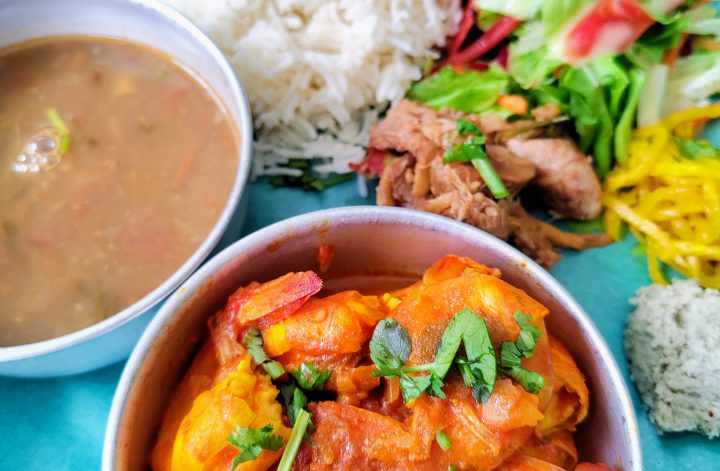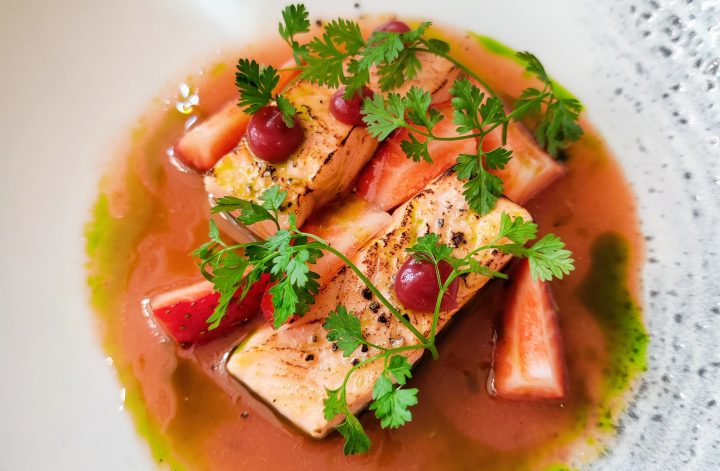“Menú del día” is the Spanish equivalent of the daily (lunch) menu. Dining in restaurants in Spain doesn’t have to be cheap even for locals, which is why many restaurants offer a special daily menu from Monday to Friday. Menú del día includes a first and second course, dessert (“postre”) and drinks (“bebida”) at a very reasonable price, which ranges between 15 – 20 Euros for the entire menu. In Spain, lunch is eaten later than in our country, so this offer can most often be encountered between 13:30 – 16:30 (on weekdays).
This economically advantageous menu has an interesting history. The Spanish government, in fact, introduced the obligation to offer a “daily menu” in all restaurants by decree in 1964, with the maximum price set by the state according to the restaurant’s level. This step was intended to support tourism. Menú del día quickly became very popular among tourists looking for good Spanish food at a good price. However, locals indirectly benefited from it as well. The obligation to offer “menú del día” was abolished in 2010, but some restaurants still have the advantageous daily menu on offer.

Common courses in menú del día
Menú del día usually consists of three basic parts: the first course is typically lighter, followed by a more substantial second course, and dessert is served at the end. For both the first and second courses, there are often several options to choose from, but the price remains fixed regardless of the choice. The meal can be accompanied by tap water, beer, wine, or coffee. For this article, I have chosen the Iñakiren restaurant as an example, which you can visit in the Spanish city of Bilbao. Iñakiren specializes in traditional Basque country cuisine, which is simple and hearty.
First course
The first course usually consists of lighter dishes such as soups, salads, or other types of starters. However, the first course itself can be very filling, such as the traditional Basque dish “alubias rojas con sacramentos” (beans in tomato sauce with Spanish chorizo sausage and pieces of meat), which would reliably satisfy me on its own. Guests could also choose from the daily menu the world-famous Spanish paella, asparagus, mixed salad, or pisto (a traditional Spanish dish of vegetables similar to the French ratatouille).

Second Course
The second course is the main part of the menu. It most commonly includes meat, fish, or eggs, but can also be vegetarian. For the second course, I chose cod on tomatoes with capers. The portion of cod was huge, at least 300 g, the fish meat was tender and not dried out, and the tomato sauce was excellently seasoned. Other options included slow-roasted beef with sauce, grilled beef steak, meatballs, or grilled fish.

Dessert
Dessert concludes the experience of the entire menu. It can be fruit, ice cream, or local sweets. In many places in Spain, you can choose a slice of local cheese with jam as a sweet finale. For Czechs, this might be an unconventional choice, but one I recommend trying. I chose a local mature sheep cheese with quince jam, which was a splendid combination.

Drinks
Drinks included in the menú del día may consist of beer, wine, coffee, tea, or a small glass of digestif. Additionally, pure water may also be part of the offer. At the Iñakiren restaurant, they brought me a whole bottle of wine, which they left on the table for the duration of the meal. However, the whole bottle might have been an extraordinary courtesy for a foreign guest (the restaurant was full of locals). Although it was a cheaper wine, it complemented the lunch menu well.

If you spend several days in Spain and want to taste the simpler cuisine that Spaniards enjoy for a regular lunch, try it through the “menú del día”. You will have the opportunity to discover Spanish dishes that often don’t make it to the evening menu but are nonetheless excellent.
Bon appétit!
More information can be found by clicking on the link on the map:


